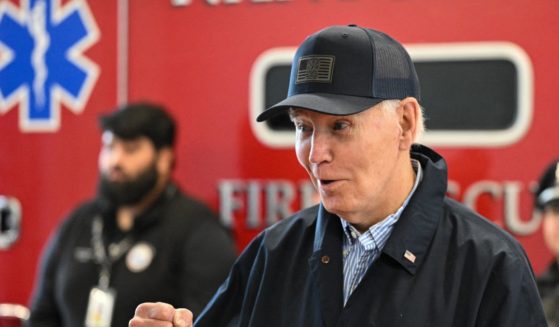Report: Despite Healthier Ratings, Super Bowl Ad Rates Flatten Out for 1st Time Since 2010
One of the biggest mistakes anyone can make when predicting the price of a given thing that’s been rising in price for as long as it’s been around is to say that it will do so forever.
After all, the last time someone tried that, the global economy collapsed.
Given that fact, if someone tries to sell you Super Bowl ad rate-backed securities, you should run very fast in the opposite direction.
Because for the first time since 2010, when almost 10 percent of Americans were unemployed and the other 90 percent were mortally terrified they were going to become so, Super Bowl ad rates have remained flat year-over-year, according to a report from Bloomberg’s Gerry Smith.
They’re still rising slightly — CBS is selling a 30-second spot during the Feb. 3 game between the Los Angeles Rams and New England Patriots for $5.3 million, up from $5.1 million last year, so the apocalyptic “rates are down” panic will have to wait for another day.
But a 4 percent rise in ad rates for a game that features teams from two of America’s largest media markets in Boston and LA and is a cultural event everywhere else is cause for concern when rates starting in about 2012 (when they were up 14 percent from 2011) shot sharply upward by high single-digit or even double-digit percentages every year.
What’s more, the TV ratings have been in slight decline since 2015, and last year’s ratings were so bad that only 103.4 million viewers tuned in to watch the Philadelphia Eagles beat the New England Patriots, the lowest number in nine years.
Part of that is cord-cutting; more and more people are using apps, streaming services and other non-traditional television services to watch the game.
Another part of it is social media; people who are interested in the commercials but not the football don’t have to watch a football game, they can watch those ads hit Twitter in a matter of seconds after they air, brands long ago having decided that the whole point of “viral video” is exactly what they’re spending all that money on Super Bowl ads for in the first place.
And part of it is simply the overall decline of television as an ad medium, since most of those cord-cutters are Millennials and “Generation Z,” the most lucrative demographics for advertisers.
The bigger question is one of whether we’ve reached peak ad rate and what it means for the NFL and the Super Bowl going forward.
Sure, advertisers are still ponying up now. The cachet of a Super Bowl ad and the strong brand perception that comes with knocking it out of the park is publicity that otherwise can’t be bought at any price. By that metric, if you’ve got a real winner, $5.3 million is a bargain.
And CBS has sold 90 percent of the ad inventory with eight days left until kickoff, so it’s not like the old dilemma in economics of whether it’s better to sell out a 100,000-seat stadium at one dollar per ticket or have one fan in attendance who paid $250,000.
But there are all kinds of knock-on effects that are in danger of happening.
For one thing, the NFL’s broadcast partners have paid the league $50 billion or so combined to broadcast games through 2022. If even the Super Bowl can’t bring a proper return on investment, then why would networks pay a combined 10 times the dollar figure that, when an argument broke out over it, brought the entire U.S. government to a screeching halt for five weeks, just to broadcast football?
When that happens — and even though ratings are back on the rise for football, they’re nowhere near where they were before the controversy over national anthem protests flushed ratings down the toilet in 2016 and ’17 — the whole thing could collapse like a pigskin subprime mortgage.
Truth and Accuracy
We are committed to truth and accuracy in all of our journalism. Read our editorial standards.
Advertise with The Western Journal and reach millions of highly engaged readers, while supporting our work. Advertise Today.











